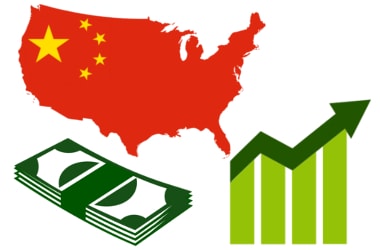
China’s economy beat the government target and grew by 6.9 per cent in the first quarter of 2017 mainly due to a surge in infrastructure investment and export.
The growth was well above the full-year target of 6.5 per cent, and the 6.8 per cent increase registered in the fourth quarter of 2016, as per China’s National Bureau of Statistics.
The GDP reached 18.07 trillion yuan ($2.63 trillion) in the first quarter.
The official data also suggested a pick-up in domestic consumption as February retail sales jumped 10.9 per cent from the previous year.
China is trying to boost domestic consumption to shift focus of its export reliant economy, which is also driven by massive state investments in improving the infrastructure.
Also, China’s exports, which were on a declining trend in recent years, showed increase in Q1 in Yuan terms.
China’s exports in yuan-denominated terms rose 14.8 per cent year-on-year in the first quarter, while imports increased 31.1 per cent.
Foreign trade volume reached 6.2 trillion yuan (about $902 billion) in the first quarter, up 21.8 per cent year on year.
China’s fixed-asset investment (FAI) grew 9.2 per cent year-on-year in the first three months of 2017, quickening from the 8.9 per cent growth registered in the first two months.
The FAI includes capital spent on infrastructure, property, machinery and other physical assets.
Private sector FAI, which accounts for more than 60 percent of the total FAI, grew 7.7 per cent in the first quarter.
This is accelerating from the 6. 7 per cent registered in the first two months.
FAI by state-owned enterprises climbed 13.6 per cent year on year during the period, and infrastructure investment expanded 23.5 per cent in the first quarter.
China’s value-added industrial output, an important economic indicator, expanded 6.8 per cent year on year in the first quarter, compared with the 6.3 per cent increase for January to February, the NBS data said.
The 6.8 per cent growth rose from the 5.8 per cent increase in the same period of 2016. It was also higher than the 6 per cent annual gain seen in 2016, NBS said.
China Banking Association has estimated country’s bad loans totalled to a whopping $220 billion last year.
Bad loans by commercial banks totalled 1.5 trillion yuan ($220 billion) at the end of 2016.
The biggest borrower is urban infrastructure projects, followed by the medical sector.